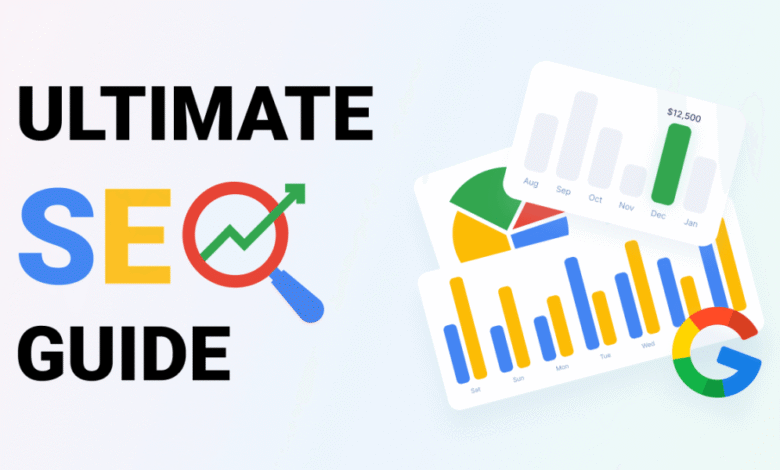Local SEO for eCommerce – How to Rank in Your Target Region

For eCommerce businesses, the digital storefront is just the beginning. If you’re looking to attract more customers in a specific area (whether it’s a suburb, a city, or a region), local SEO is your golden ticket. Unlike traditional brick-and-mortar businesses, eCommerce retailers often overlook the power of regional search engine optimisation, assuming it only benefits physical stores. But with consumer behaviour increasingly leaning toward local-first searches, even online-only retailers can gain a competitive edge by investing in local SEO strategies.
If you’re running a store in Victoria and you want to make an impact in your specific area, partnering with an experienced eCommerce SEO agency in Melbourne can help tailor your digital strategy to your geographic goals.
Keep reading to learn how eCommerce businesses can effectively rank in their target regions using local SEO… and why doing so is more important than ever!
Why Local SEO Matters for eCommerce
You might be thinking: “I ship nationwide, why should I focus on local SEO?”. And that’s a fair question, but the answer is: visibility. Even if you serve all of Australia, consumers are still more likely to trust and click on businesses that appear local to them. Here’s why local SEO matters for your eCommerce brand:
- Higher search relevance: Search engines prioritise results based on proximity and relevance. By aligning your SEO with a specific location, you increase the chances of ranking higher in local search queries.
- Boosted trust and credibility: Shoppers often feel more comfortable buying from a business that appears to be ‘local’. It feels more accessible and trustworthy.
- Improved conversion rates: Local SEO often leads to higher intent searches – customers looking for nearby solutions are usually further down the purchase funnel.
Step 1 – Optimise for Local Keywords
Just like with broader SEO, keyword research forms the backbone of local optimisation. The goal here is to integrate location-specific keywords into your content, metadata, product pages, and blog posts. For example:
- Instead of “natural skincare products”, use “natural skincare products in Melbourne”
- Instead of “affordable hiking gear”, go with “affordable hiking gear Sydney”
Focus on combining product-related keywords with geographical terms – you can use tools like Google Keyword Planner or Ubersuggest to find keyword variations with strong local intent.
Where to Use Local Keywords:
- Page titles and meta descriptions
- Header tags (H1s and H2s)
- Product descriptions
- Blog content
- Image alt tags
- Internal links
Step 2 – Create Location-Specific Landing Pages
If your eCommerce store serves multiple regions, consider creating dedicated landing pages for each location. These pages should contain unique, locally optimised content that speaks directly to users in that area. For instance, if you’re targeting both Melbourne and Brisbane, you might build:
- /melbourne-natural-skincare/
- /brisbane-natural-skincare/
Each page should showcase:
- Local reviews or testimonials
- Region-specific shipping details
- Relevant product collections
- Local events or pop-ups (if applicable)
This not only helps search engines understand where you operate, but also improves the customer experience by making your brand feel more personal and local.
Step 3 – Leverage Google Business Profile (Yes, Even for eCommerce)
Many eCommerce businesses skip Google Business Profile (formerly Google My Business) because they don’t have a physical storefront. However, if you have a registered business address – even if it’s a home office or warehouse – you can still claim and optimise your listing. The benefits of having a Google Business Profile include:
- Appearing in local map packs
- Displaying customer reviews
- Providing location-specific contact and business info
- Enhancing visibility in mobile and voice search results
Make sure your NAP (Name, Address, Phone number) is consistent across your website, Google Business Profile, and any directories.
Step 4 – Collect Local Reviews
Social proof is a powerful ranking and conversion factor. Encourage satisfied customers to leave reviews on Google, Facebook, and other relevant platforms. If you’ve served clients in Melbourne, for example, ask them to mention your location in their reviews. Phrases like “fast delivery in Melbourne” or “best skincare products in VIC” can provide valuable SEO signals. Pro tip: Feature local testimonials on your site’s location-specific pages to reinforce credibility.
Step 5 – Build Local Backlinks
Backlinks from reputable local websites signal authority and relevance to search engines. For eCommerce, local backlink opportunities might include:
- Collaborating with regional bloggers or influencers
- Getting featured in local online publications or community boards
- Joining your local Chamber of Commerce directory
- Sponsoring community events or sports teams
The more connected your brand becomes within the digital ecosystem of your target region, the more trust and visibility you gain.
6 – Use Schema Markup
Schema markup (also called structured data) helps search engines better understand your website. For local SEO, local business schema is especially useful – it highlights important details like your business name, address, phone number, and service area. Even for eCommerce, adding this structured data to your site can boost your chances of appearing in rich results, local packs, and voice search queries.
Step 7 – Don’t Neglect Mobile and Page Speed
A large portion of local searches happens on mobile devices – that means your eCommerce site must be fast, responsive, and mobile-friendly to rank well locally. Use tools like Google PageSpeed Insights or GTmetrix to audit your site’s performance. Here are some common areas to improve:
- Compress image files
- Enable browser caching
- Minimise CSS and JavaScript
- Optimise your site layout for mobile users
A smooth user experience not only helps with rankings; it also increases conversions.
Step 8 – Create Locally Relevant Content
Blogging is still a powerful tool for SEO – especially when you tailor your content to resonate with local audiences. Here are a few content ideas for local eCommerce SEO:
- Gift guides for Mother’s Day in Melbourne
- Local event roundups relevant to your product niche
- Regional customer spotlight stories
- Tips for using your product in specific Australian climates
Locally relevant content allows you to target long-tail keywords, improve topical authority, and connect with your community.
Local SEO isn’t just for cafés and tradies – it’s a game-changer for eCommerce brands too
Whether you’re a niche boutique shipping across VIC or a national retailer trying to gain a foothold in multiple cities, optimising for local search can lead to more visibility, more trust, and ultimately more sales. By implementing local SEO strategies such as regional keyword targeting, location pages, customer reviews, and locally focused content, your online store can thrive in competitive markets. With the right expertise and strategy, your store can become a go-to destination in your chosen region – online and off.





